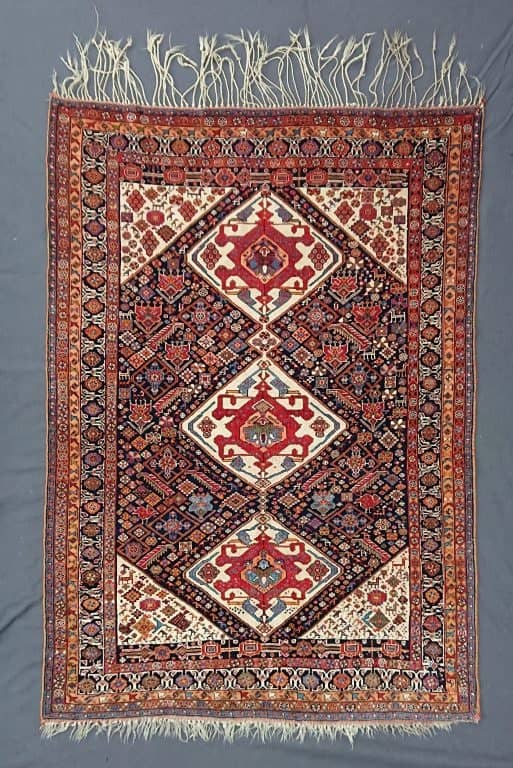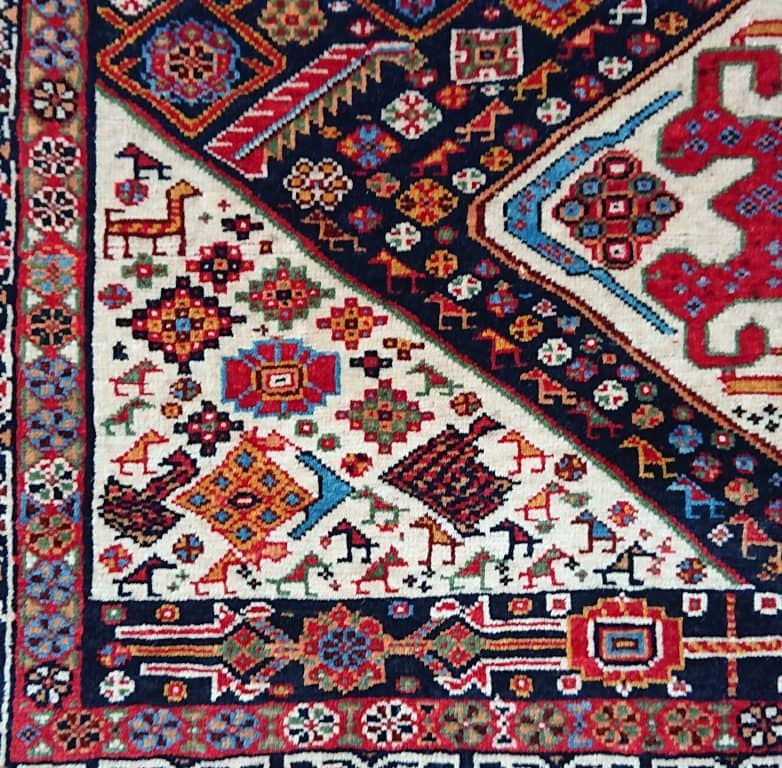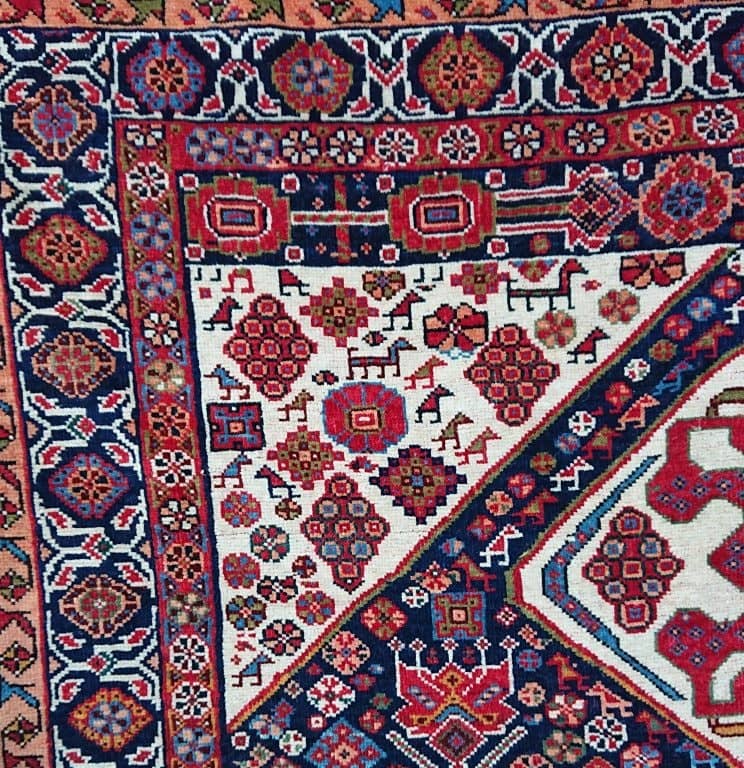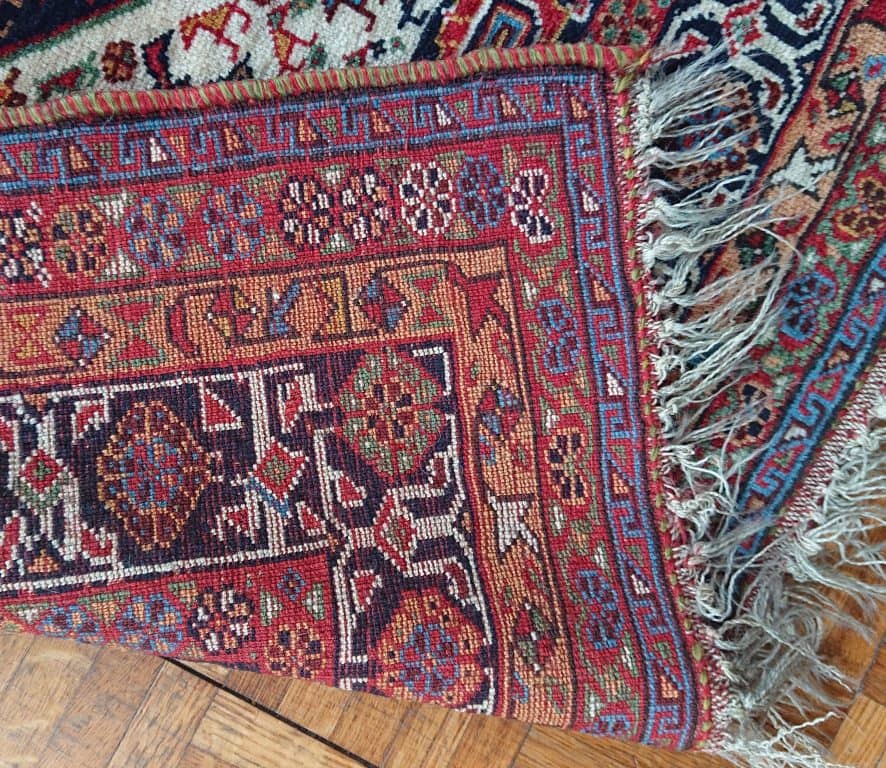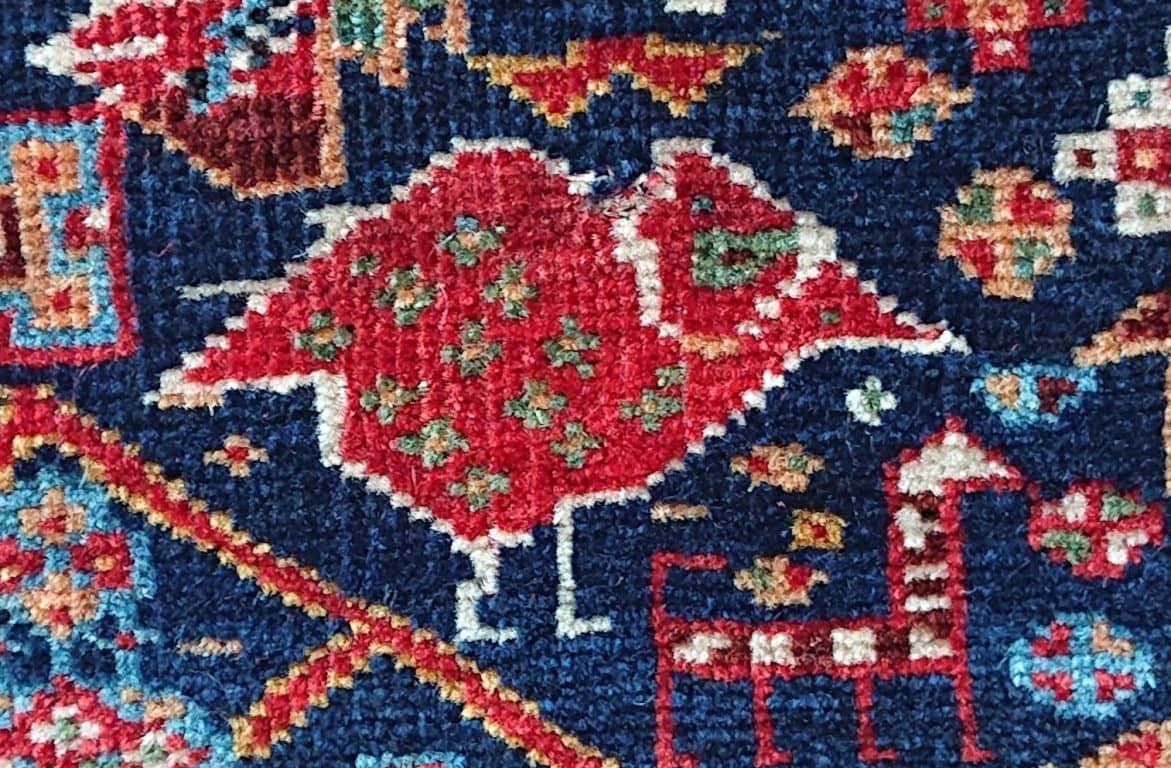Antique Qashqai Tribal Rug
Description
This antique southwest Persian Qashqai tribal rug dates to the last quarter of the 19th century.
It is a rug with a well known design of three interconnected lozenges, in this case all on a white ground, down the middle of the field. However, it is also a rug with a lot of detail and elements that are not necessarily typical of one particular tribal sub group.
The first thing that catches the eye is the quality and range of colours, all naturally dyed, all saturated and distinctive, like the warm orange in one of the minor borders. The red, four-armed motifs in the centre of the lozenges stand out because of the scarcity of design and the contrast in colour. These motifs are frequently found in rugs from the Fars region (see, for instance, James Opie’s Tribal Rugs of Southern Persia. Portland, James Opie Tribal Rugs Inc, 1981, page 19, or plates 1 and 2 in Woven Gardens. Nomad and Village Rugs of the Fars Province of Southern Persia, edited by David Black & Clive Loveless, London 1979).
In contrast to the simplicity of the lozenges stands the field on a dark blue ground. It contains a multitude of design elements, notably a “de-constructed” Herati design with only two leaves protruding from the central diamond, a large variety of diamonds, and various animals, including some uncommonly fat birds of a type you would expect to find in Khamseh bird rugs.
The main border is very similar to that illustrated in Opie (op cit., page 29); according to Opie, this type of main border is often found in rugs from the Rahimlu taifeh, or tribal sub grouping.
Finally, the Qashqai rug in hand has a very unusual border finishing the field at the top and bottom ends of the field, but not the sides (see the details on the images provided): it is a chain of two floral and four geometrical rosettes conjoined with alternate crosses and parallel lines in each border, all set on a very dark blue, almost black ground. We have not come across a border of this type in a southwest Persian rug before. It might well be an illustration of Opie’s view that the Qashqai tribes almost certainly borrowed design elements from other tribal groupings and incorporated them in their repertoire (see op cit., page 18).
The rug is woven in excellent wool on a woolen foundation and with a red weft using an asymmetric, or Persian, knot open to the left. It is in excellent condition – a genuine piece of tribal art.

